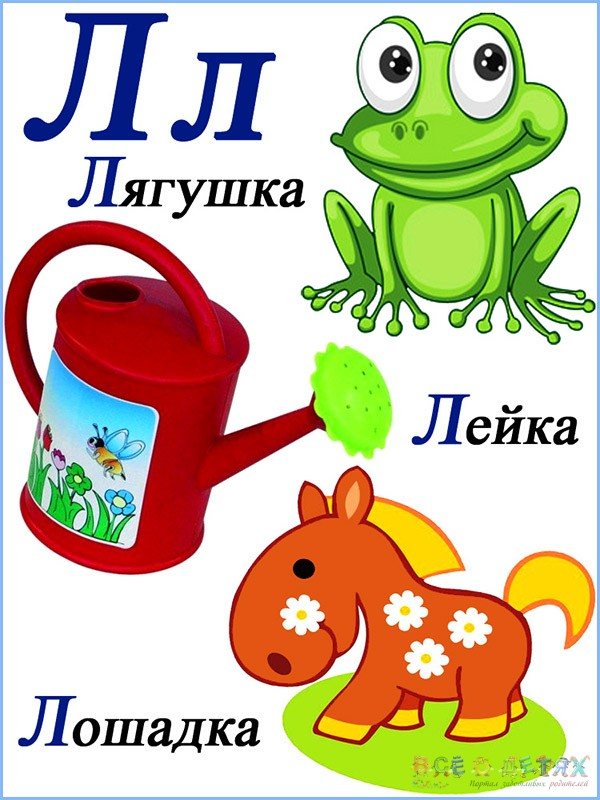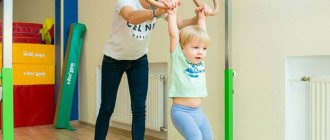How to teach a child to talk?
The baby is already walking, but has not yet learned to talk.
This question worries parents very much. But it is important to remember that each child is an individual and if there is no developmental delay, then you just need to be patient. A small child can be compared to a voice recorder and copyright. He writes everything down and copies it after his parents. The baby is like a blank slate. He listens to mom and dad, remembers the sounds and syllables they make, and tries to repeat it himself, placing his tongue in different positions.
And it turns out that it works. First he works on the sound, then he tries to combine it into a word. This takes time and training.
And how can mom and dad help in this situation? In order for the baby to speak faster, you need to have a conversation with him. She should be relaxed. While doing ordinary things, walking in the fresh air, playing with the baby, parents should have a dialogue with the baby.
Speech therapists distinguish two types of speech development: passive and active. Passive is understanding the language, and active is speaking. Passive develops much faster in a baby.
Starting from 10-12 months of age, the baby understands what we are talking about. Knows the name of objects, but still can’t say it. Repeats individual syllables, say aw-aw, ko-ko, yes, ma, pa.
Children are all different, but most of them do not speak until they are two years old. This is normal, the main thing is not to panic. They understand everything and will definitely talk.
Then the baby will tell you everything he has accumulated over these two years. This moment will come unexpectedly. And already at three years old, the child’s development will be at the level of his peers or even surpass them.
It is important to remember the moment of awareness. That is, when a child simply repeats words after his parents, and when he consciously names them. Therefore, the child also needs to be shown what we are talking about.
For example, when playing with a child with toys, telling him what kind of toy it is, showing him how to play with it, you can come up with a story and make a kind of puppet theater. The main thing is to talk to the child and perceive him as an adult.
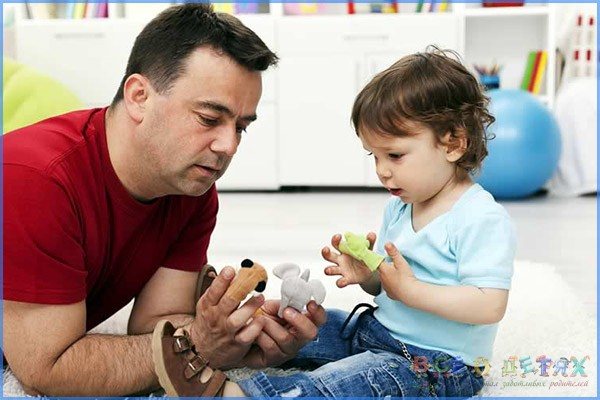
What should parents do?

First of all, you need to be calm about this fact; you need to talk to the child slowly so that he hears all the sounds in the words. There is no need to correct the baby; it is better to repeat the request and fulfill it. If a child asks for “makako,” you need to say, “Do you want milk? On the".
There are sounds that are simple for the articulatory apparatus and complex; the sound “s” does not appear in all children under two years of age, and many children learn whistling, hissing, sonorant and double consonants after three years. Some children can speak well by the age of 3-4 years, while others only by the age of 6. Whether it is necessary to study with a speech therapist or at home in this case is decided during face-to-face consultations.
Today, if a child of 1.5-2 years old understands speech addressed to him well, has up to 50 words in his dictionary, including onomatopoeia and babble, he actively uses these words in speech - this is normal . If his speech contains two-syllable constructions, short sentences are also good. It is important to actively engage with the baby in order to stimulate speech development; it is important to talk to him, encourage dialogue, and not force him to repeat words.
Important
Watching TV and constant background sounds lead to a decrease in activity in the baby’s own speech. If there is a bias towards auditory load, children will remain silent longer. We need to encourage them to talk.
You should inform your pediatrician about your concerns about the child’s speech development; you may need additional examinations and consultation with a neurologist or ENT doctor with a hearing assessment. If there are no developmental or health problems, it is important that parents take some measures to stimulate the child’s speech at any age.
Important
From the age of 6 months, the child begins to understand the speech of the people around him. This is an important aspect of his own speech development, which is closely tied to thinking, play and objective activity; it is needed for the socialization of the baby. And it is necessary to develop speech in communication and joint games between children and adults.
Stages of speech development
There are five stages:
- Booming. At about two to three months, the baby tries to make sounds.
- Distinct humming. Starting from the fifth to seventh month, sounds become more or less intelligible.
- Pronunciation of short words. At seven to nine months, the baby speaks short words: mom, dad, grandma.
- Meaningful pronunciation of words. After the ninth month, the baby puts meaning into the syllables he pronounces.
- Lexicon. After a year, the child should pronounce up to 10 words. He remembers and learns quickly.

Speech development techniques
- Conversation between mother and child. The mother spends a lot of time with the baby. Tactile and verbal conversation is important to him. It is necessary to hum to the baby so that he can see mommy’s face and articulation.
- Comment on your actions. Tell your baby everything you do.
- Talk to your child so that he can see your face and your articulation.
- At the age of 1.5 - 2 years, the mother should conduct a conversation with the baby in the usual rhythm and tone. Only when it comes to new words, special attention is paid to articulation and stress.
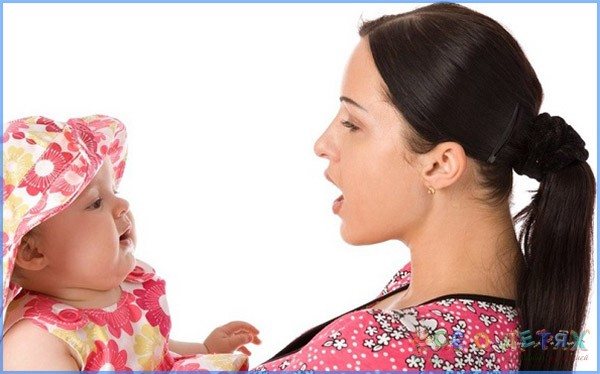
- Don't replace complex words with simple ones. Call a spade a spade.
- Don't forget about verbs.
- Use contrast. For example: a bird flies - a dog runs
- Read poems, nursery rhymes, fairy tales from the very beginning.
- Play with words, syllables, sounds.
- It is important to improve the development of fine motor skills of the hands. Let your baby play with cereals, pasta, and dough. Children with well-developed fine motor skills are able to think logically, they are attentive, and they begin to talk and write faster.
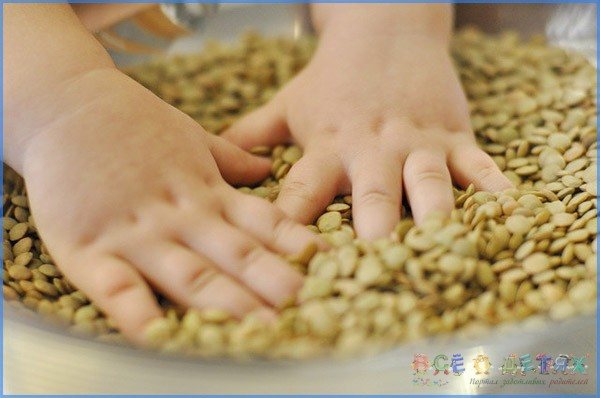
Recommendations from a speech therapist
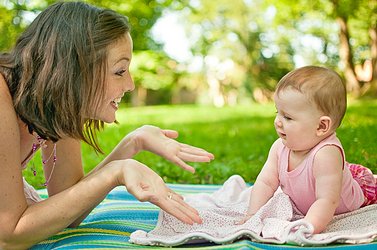
Make it a rule to talk to your child everywhere
- Talk to your child a lot and everywhere - at home, on a walk, performing hygienic actions.
- Introduce your child to a variety of sounds.
- Allow your baby to play with small objects: beans, peas, beads, coins (under control, of course). They can be sorted, rearranged, poured using cups, jars, trays, spoons, scoops. Play with sand.
- Read fairy tales, short stories, poems, sing songs.
- Conduct re-enactments. For this, not only toys and homemade products will be useful, but also everyday items and products.
- Ask your child to talk more, carefully correcting his speech.
- Encourage him to name an object when the baby reaches out to it, demands it and, without trying to name it, hums. Offer him something nearby. If he refuses, explain that you did not understand him.
- Encourage your baby to communicate with other children - organize small holidays and group activities.
The child does not speak at two years old. Causes. How can you teach to talk?
The baby is two years old, but he still doesn’t want to talk? Why does this happen? How can he be taught this? These questions concern young parents.
Experts who study the main reasons for the reticence of children will help you figure it out:
- Heredity. If the baby's parents were in no hurry to talk
- Laziness. The kid is lazy, but his parents indulge him in this
- Accumulation of information. The child accumulates for a long time, and then speaks in phrases.
There are also physiological abnormalities: trauma at birth, previous illnesses, lack of hearing.
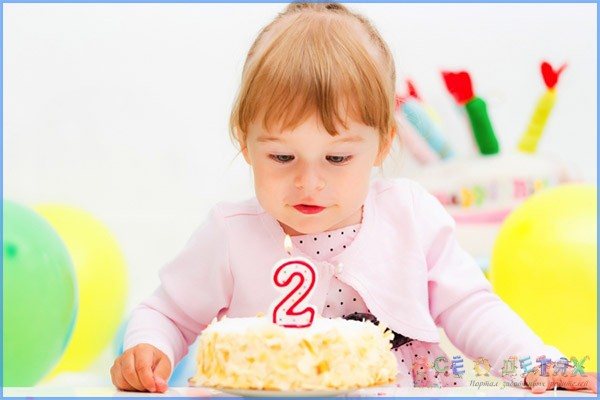
You can teach your baby to speak, the main thing is not to despair and work with your child regularly. Create a favorable language environment in the house and encourage the child to speak language. First of all, we take pictures on any topic - fruits, vegetables, animals, cars, planets, etc.
Or books with lots of illustrations. We hang it on the walls, cabinets, refrigerator, at the level of children's eyes. At the same time, discuss with the baby what is shown in the picture.
First, explain to the baby by naming the image, bringing it as close to your face as possible. Young children read lips. It is important here that the baby reads what you told him.
Pictures need to be changed every week. The game should be fun and bring the child a good mood. If the child is not interested, nothing will come of it.
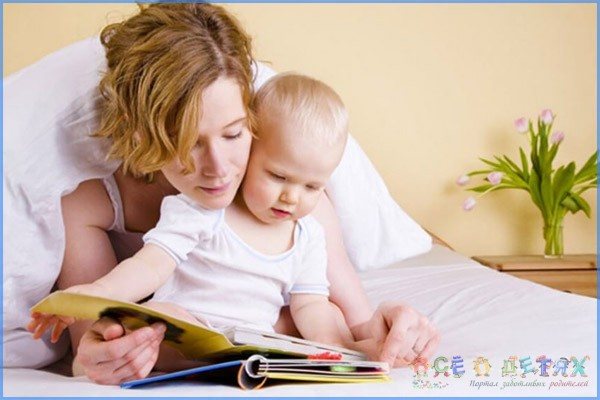
Why does a child not speak at 2 years old and what to do?
Many parents are often worried if a child at 2 years old speaks very little or nothing at all. The reasons may be different:
- intrauterine brain lesions, as a result of which areas responsible for speech were damaged;
- neurological diseases;
- hearing loss or deafness;
- intoxication of the mother’s body during pregnancy due to alcohol intake, infections, which can cause alalia and general speech underdevelopment;
- mental impairment and developmental delay;
- autistic type disorders;
- pedagogical neglect and lack of adult attention;
- psychological trauma.
If at 2 years of age there are doubts about whether the child will begin to speak, then it is better to start a full examination and visit the following doctors:
- ENT. Check the audiogram for the quality of sound that the child's ear can perceive.
- Neurologist. Before the hike, it is necessary to record the age at which growth spurts and new skills occurred: he began to roll over, walk, etc.
- Speech therapist. In order to exclude pathologies of the muscles or speech apparatus at birth.
- Psychologist. It is better to visit after consulting a neurologist.

This specialist will help you find out whether there are psychological aspects to the disorder and give recommendations to parents on how to help them develop.
Basic recommendations for diagnosing the disorder:
- medical examination, as mentioned above, with consideration of specialist recommendations;
- limit viewing of cartoons, games on tablets or phones;
- talk to your child more, and communication should be included, with eye contact and active facial expressions;
- pronounce all the actions of the baby and yours, monitor the clarity of speech;
- Don’t scold if your two-year-old doesn’t speak, this will only increase the stress. On the contrary, encourage attempts to make contact with you.
Speech therapy exercises for developing speaking skills
Professor Pavlov proved a direct dependence on the use of muscle sensations that go from the tongue organ to the cerebral cortex. In simple words, fine motor skills have a beneficial effect and stimulate speech development.
Preparatory exercises for developing both physically and quickly speaking:
- Fun with different types of cereals: pouring, sifting, searching for toys in cereals, drawing on semolina, etc.
- Modeling from plasticine or special dough
- Painting with finger paints and brushes
- Finger games: special finger puppets, musical songs - dramatizations by E. N. Zheleznova. “Bale-bale fist”, finger games in the form of rhymes “Lessons of a speech therapist” Kosinova E. M.
- Reading books. Let's start with some nursery rhymes. You can read Barto's "Toys". Next, go to the fairy tales: Kolobok, Turnip, Teremok, Soroka Belobok and others. The main task is active reading, conversation between mother and baby.
- Games with toys, during which you talk to the child and encourage him
- You can talk and describe daily home activities
- Watch cartoons, listen to music, sing funny songs for the baby
- It is useful for a child to play in the sandbox and communicate with peers.
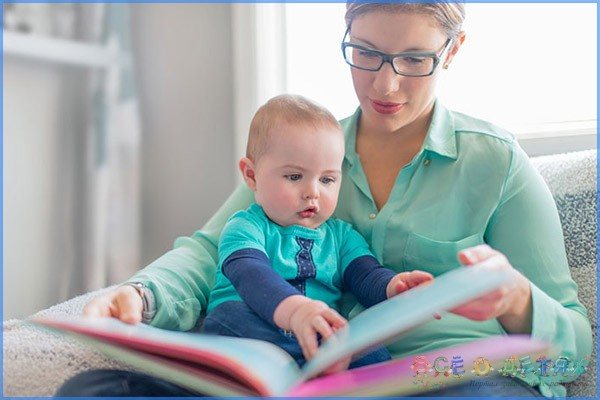
Articulation gymnastics for little ones
It is very useful to give your baby a massage before gymnastics. The baby should be in a good mood and healthy. The recommended exercise time is the same and lasts no more than 15 minutes. Any mother knows her child and can create gymnastics in an interesting way.

- Balloon. We show the baby how to inflate a balloon, while inflating his cheeks. This way we massage the face.
- Locomotive. We teach the child to distinguish sounds. How does a train make? That's right. Fold the sponges into a duck shape, making circular turns left and right at the same time. Time, one minute per side.
- Smile. First we smile, and then we put our lips into a tube, two minutes.
- Kiss. We kiss and press our lips together. We practice for two minutes.
- Little horse. You need to make a similar sound when stopping a horse - tfpr-tfpr. We do it as continuously as possible. This exercise helps to develop your lips.
- Mouth - sponges. Use your tongue to sweep across your lips in both directions.
- Language. Consistently touch the upper and lower lips. Next to the corners of the left and right sides of the mouth.
- Morning wash. We imitate washing the face, stroke the face and neck with both hands, rub from the forehead, along the maxillary sinuses, to the neck.
- We finish the gymnastics by repeating vowels and consonants.
Speech therapists, for the formation of the articulatory apparatus, recommend reading the book “Fun Articulation Gymnastics” with your child, N.V. Nishcheva. The book is suitable for little ones too.
By repeating sounds after animals and imitating movements, looking at bright pictures, such gymnastics can be done easily and naturally. And the beautiful mirror included is a pleasant surprise for the kids, because they love to look in it.
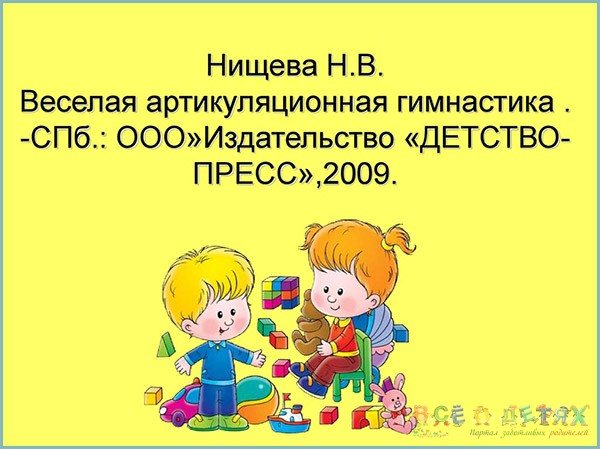
Another very cool book for children from six months is “Lessons of a Speech Therapist” by E.N. Kosinova. The contents of the book are simply fascinating. It presents a whole collection of finger games, language gymnastics in the form of games (funny stories about the languages of the world), tongue twisters for children aged 3 years and older. The book is very bright.
How to teach a child to say the letter P: speech therapy exercises
For children, the sound “r” is the most difficult to pronounce. Most parents are concerned with the question of how to teach their baby to say the letter “R”.
As defectologists say, the favorable age for mastering the sound “r” is five to six years. It is at this age that the intervention of a specialist can help the child speak correctly.
Although the foundation needs to be laid from the very beginning. For this purpose, a set of exercises has been developed in a playful way for the little ones:
- Learn a few tongue twisters with your child that train the sound “r” or come up with your own together with your child
- Ask your baby to imitate the sounds of animals, such as a tiger.
- Many children love the “cat” exercise. Pour milk into a bowl and ask your baby to drink it, like a cat does.
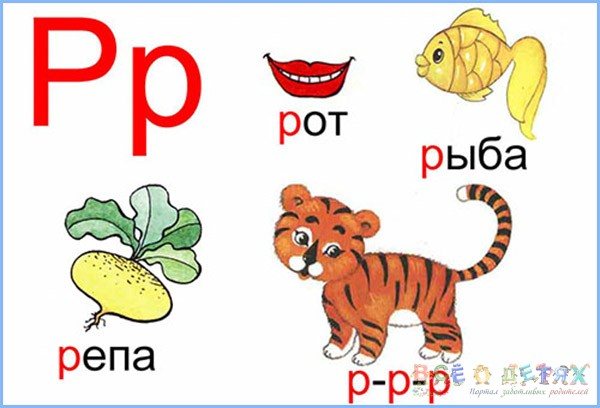
Recommendations for parents
Children aged three years old know most objects or their purpose. Therefore, parents need to say the name of unfamiliar objects and explain what they are needed for. In addition, the following exercise is useful for developing vocabulary, grammatical structure and coherent speech: select one subject and describe it. After some time, ask your child about this item. You need to ask questions in such a way that the child gives detailed answers.
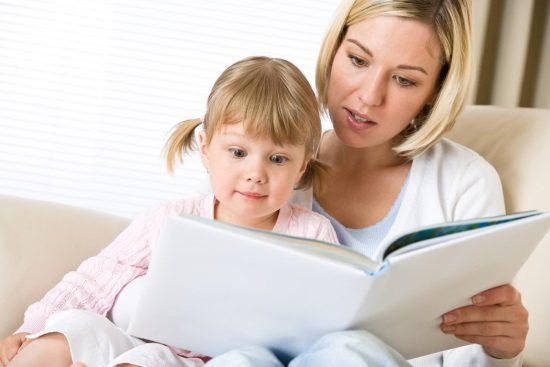
Look at books with illustrations together and tell them what is depicted there. You can practice retelling short fairy tales - only they must be accompanied by pictures. During the retelling, ask leading questions that will already contain part of the answer.
After reading a fairy tale, ask for opinions: which hero did you like, why, what was the fairy tale about, what was most memorable. This is a good way to develop grammatical structure and coherent speech.
While walking, look at the surrounding objects, train your counting skills and describe nature (flowers, trees, animals, birds). Answer every question asked, but the sentences should not be difficult for children to understand. An adult’s speech should be understandable, pronounce sounds clearly, and while reading, use intonation to convey the characters’ personalities.
At this age, be sure to play role-playing games. They not only develop imagination, but also improve coherent speech. During such games you can expand your vocabulary. For example, explore new types of clothes, shoes or furniture. Role-playing games are suitable for training diction and expressiveness of speech.
The main task of parents is to encourage children's speech activity and develop social skills. It is at this age that language is not just a tool for understanding the world, but also a way of interacting with people.
How to teach a child to say the letter Sh
Another “problematic” sound among children is “Sh”. It is important to start learning as early as possible so as not to miss the moment and correct the pronunciation in time. We start with articulation gymnastics.
- "At the dentist." The child opens his mouth as wide as possible and fixes the position for 15 seconds. Repeat 10 times. The exercise strengthens the lower jaw.
- "Fence". We smile and place the upper jaw on top of the lower jaw. We fix it for 20 seconds, trying to relax the facial muscles.
- "Smile". Having closed our teeth, we try to stretch our lips into a smile for 5-10 seconds, repeat 10 times.
- "Proboscis". We stretch our lips into a tube as far as possible. Repeat 10-15 times
After warming up, we begin language learning:
- "Horse". We press our tongue to the roof of our mouth and clack, imitating a horse.
- “Clock”. Turning left - right, repeat “Tick-Tock”
- “Toad” We move the tongue forward and backward.
- Create your own word game with hissing sounds.
- Communicate with your baby without “lisping” and using correct pronunciation.
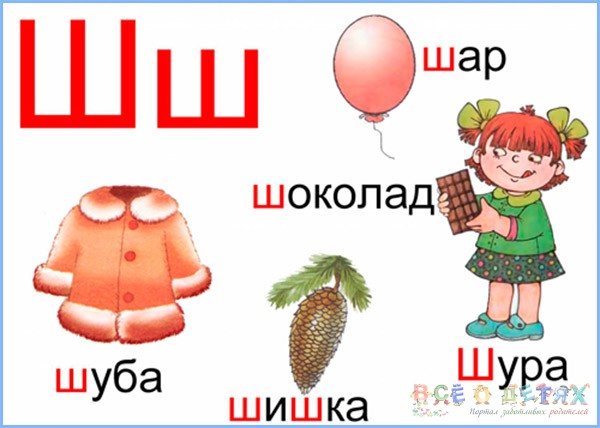
Speech games
It is important to be pedantic and consistent in speech development games. You should always start with the same exercises. For example, starting with the sound a or the syllable ma. This helps the child tune in and get involved in the game, showing that he is ready to play repeat games. If the child responds to you by repeating your sounds, he is ready to play.
What do you need for this? First of all, you need to speak only those syllables and sounds that the child has already learned. You can use from one to three repeating syllables - this is the average number of syllables in Russian speech. The syllables should be repeated - ma-ma-ma, ba-ba-ba, pa-pa-pa.
If the baby said the wrong syllables, instead of ga-ga - ba-ba, you don’t need to correct him or tell him the wrong way, you just need to repeat the chain again.
If your child easily repeats the same chains of syllables after you, you can start learning how to change a syllable to another. Ba-bu, ma-me, pa-pe with a change in vowel, or ba-pa, ma-pa - with a change in consonant. When the child has mastered these exercises, you can move on to simple words consisting of those syllables that the baby pronounces well - doll-la, tra-va, po-ka, no-ga. The baby will pronounce them in a simplified version.
Gradually, you need to expand the baby’s vocabulary, offering him syllables that he does not yet know himself, but let him try to pronounce them.
Gradually he will master more and more new verbal constructions. We recommend reading: Child does not speak: what to do?
Alena Paretskaya, pediatrician, medical columnist
6, total, today
( 64 votes, average: 4.11 out of 5)
Attention deficit disorder in children: symptoms, methods of correction
Streptococcus in a pregnant woman (group B streptococcus)
Related Posts
How to teach a child to say the letter L
Violation of the pronunciation of the sound “L” in defectology is called Lambdacism. Very often children do not pronounce this letter because they do not hear it in a word. To teach a child to pronounce the letter “L”, you need to show him the words where it occurs and it is advisable to show illustrations.
They even out the language pronunciation of nursery rhymes and tongue twisters. And we start the warm-up with speech therapy exercises:
- "Painter". Using the tip of your tongue, smoothly and carefully move it across the upper palate, as if working with a painter’s brush.
- "What's hiding under the tablecloth." We take five objects that have the letter “L” in their designation. Let the child guess the name of the thing by touch.
